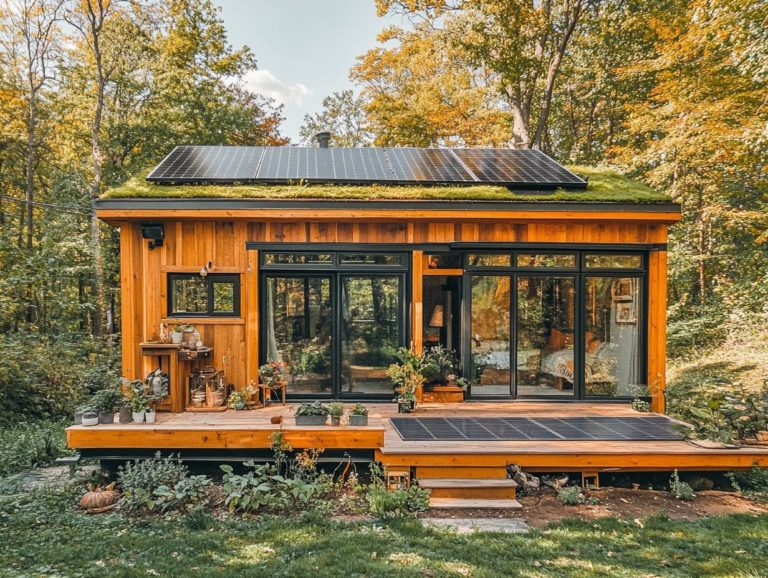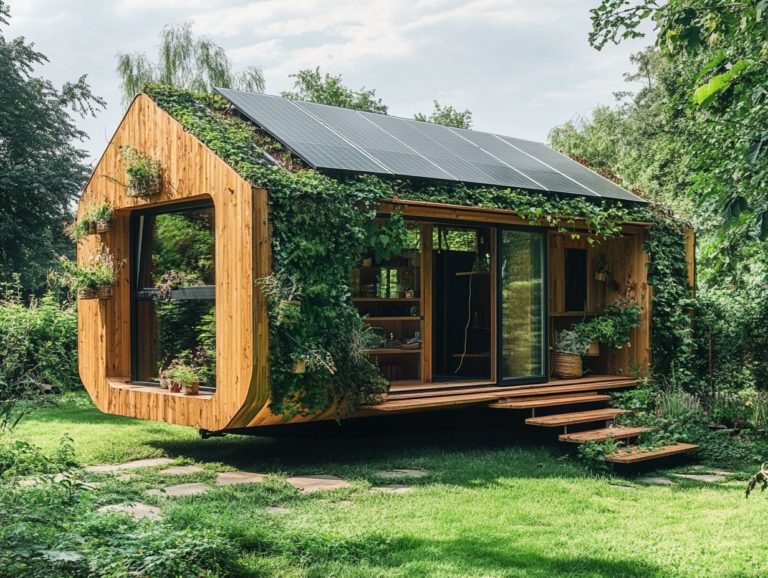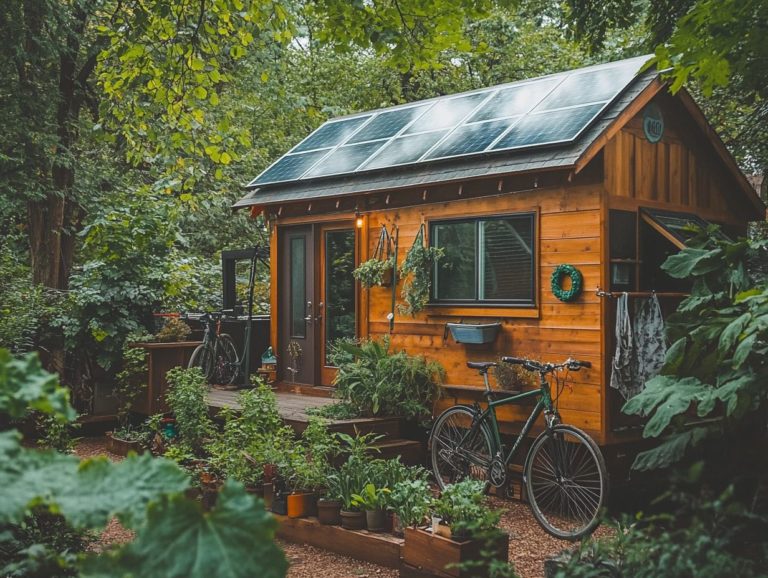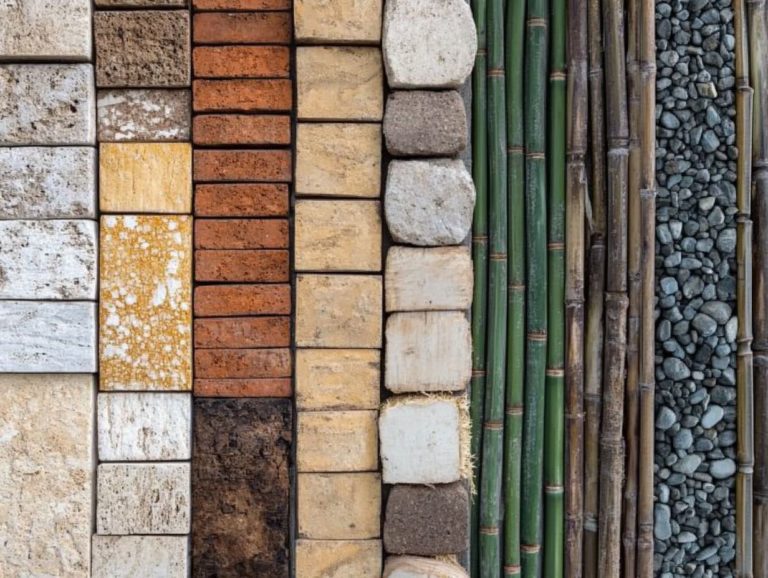Designing an Energy-Efficient Tiny Home with Materials
Tiny homes are revolutionizing perceptions of living spaces. They present a minimalist lifestyle that champions sustainability while ensuring comfort is never compromised.
This article delves into the concept of tiny homes, emphasizing their financial and environmental advantages. It explores the intricacies of designing energy-efficient spaces, choosing sustainable materials, and maximizing functionality within compact areas.
Whether you are contemplating a tiny home or simply intrigued by this growing trend, you will discover practical insights for embracing a more sustainable lifestyle.
Contents [hide]
- Key Takeaways:
- The Concept of Tiny Homes
- Benefits of Living in a Tiny Home
- Designing an Energy-Efficient Tiny Home
- Choosing Sustainable Materials
- Maximizing Space and Functionality
- Incorporating Renewable Energy Sources
- Maintaining Energy Efficiency in Daily Life
- Frequently Asked Questions
- What is the importance of designing an energy-efficient tiny home?
- What materials should be used in the construction of an energy-efficient tiny home?
- How can proper insulation contribute to the energy efficiency of a tiny home?
- What are some design features that can help improve the energy efficiency of a tiny home?
- Is it possible to make a tiny home completely self-sufficient in terms of energy?
- How can I ensure that my tiny home is energy-efficient in the long run?
Key Takeaways:
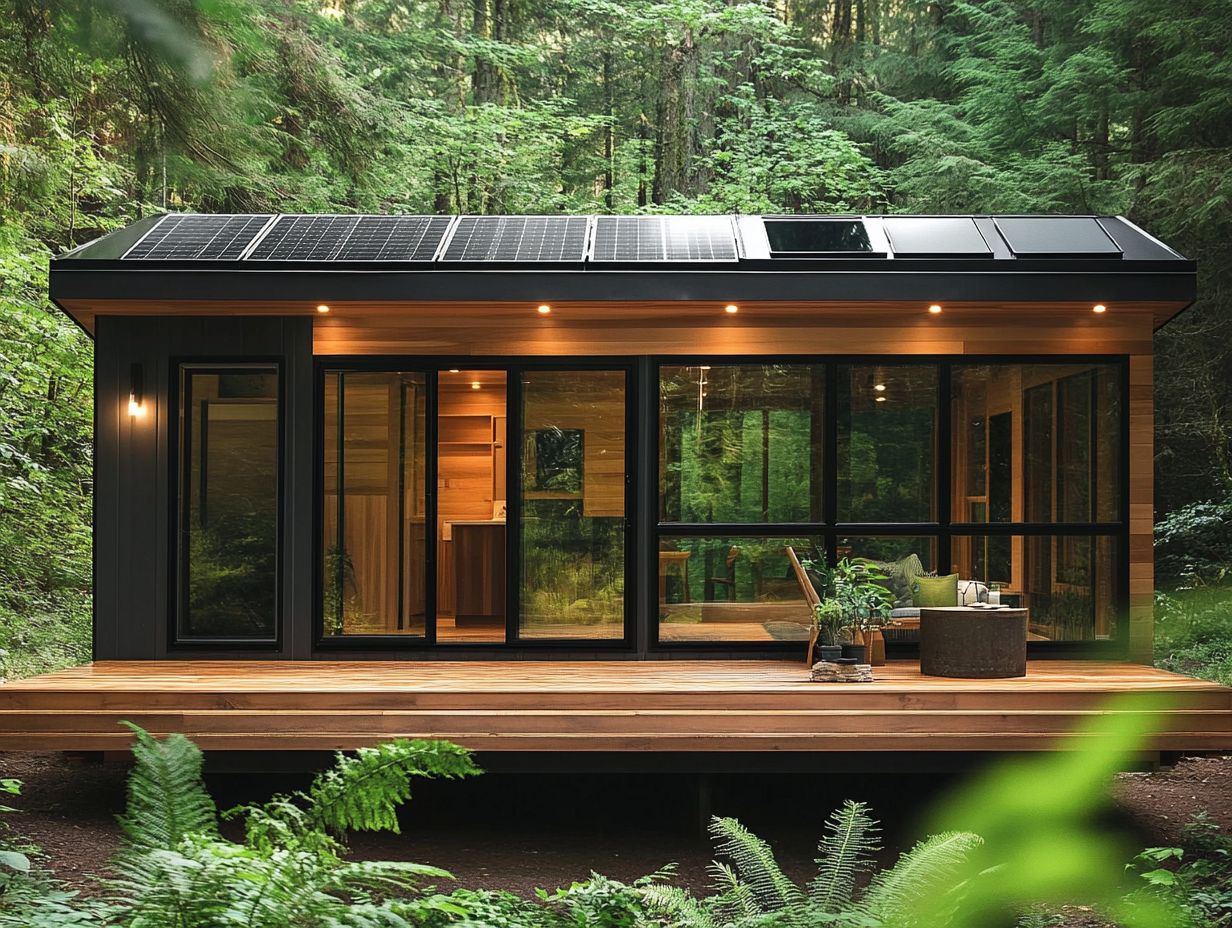
- Tiny homes offer financial and environmental benefits, making them an attractive housing option.
- Proper design and choice of materials are crucial for energy efficiency in tiny homes.
- Incorporating renewable energy sources and practicing sustainable habits can maximize energy efficiency in daily life.
The Concept of Tiny Homes
The concept of tiny homes has truly taken off in recent years. It presents a unique pathway for those who seek sustainable living and wish to break free from traditional housing norms.
These innovative designs emphasize eco-friendliness and cultivate a sense of community among like-minded individuals. Characterized by their independence from traditional utilities, tiny homes utilize space-saving furniture and compact layouts to optimize functionality while minimizing environmental impact. For those interested in building their own, exploring the best materials for tiny house construction is essential.
This movement embraces a minimalist lifestyle that values simplicity and resourcefulness. It appeals to many individuals eager for an alternative to conventional housing.
What are Tiny Homes?
Tiny homes open the door to compact living. They often measure under 400 square feet and encourage a minimalist lifestyle.
These efficient spaces feature innovative designs that make the most of every square inch. You will find furniture that serves more than one purpose, like foldable tables and convertible sofas that adapt to your needs.
More tiny homes are also prioritizing sustainability. They utilize eco-friendly materials such as reclaimed wood and energy-efficient appliances. This helps minimize your carbon footprint while allowing you to enjoy the tranquility of nature.
Benefits of Living in a Tiny Home
Embracing life in a tiny home brings numerous benefits. These range from achieving financial independence to minimizing your environmental footprint.
The allure of tiny living goes beyond financial savings. It fosters a low-maintenance lifestyle that champions simplicity and sustainability. By downsizing, you will see a drop in your utility bills, freeing up resources to invest in experiences rather than material possessions.
The environmental impact of tiny living is significantly reduced. You will consume fewer resources and produce less waste compared to conventional homes.
Financial and Environmental Advantages
The financial and environmental benefits of tiny homes are compelling. They offer a path to financial independence while significantly minimizing your ecological footprint.
By integrating energy-efficient appliances think Energy Star-rated refrigerators and low-flow water fixtures these compact spaces help lower your utility bills. They also encourage sustainable living practices.
With the savings accrued from reduced energy costs, you can redirect those funds toward savings or investments. This aligns with your long-term sustainability goals and lets you explore renewable energy options, such as solar panels.
Designing an Energy-Efficient Tiny Home
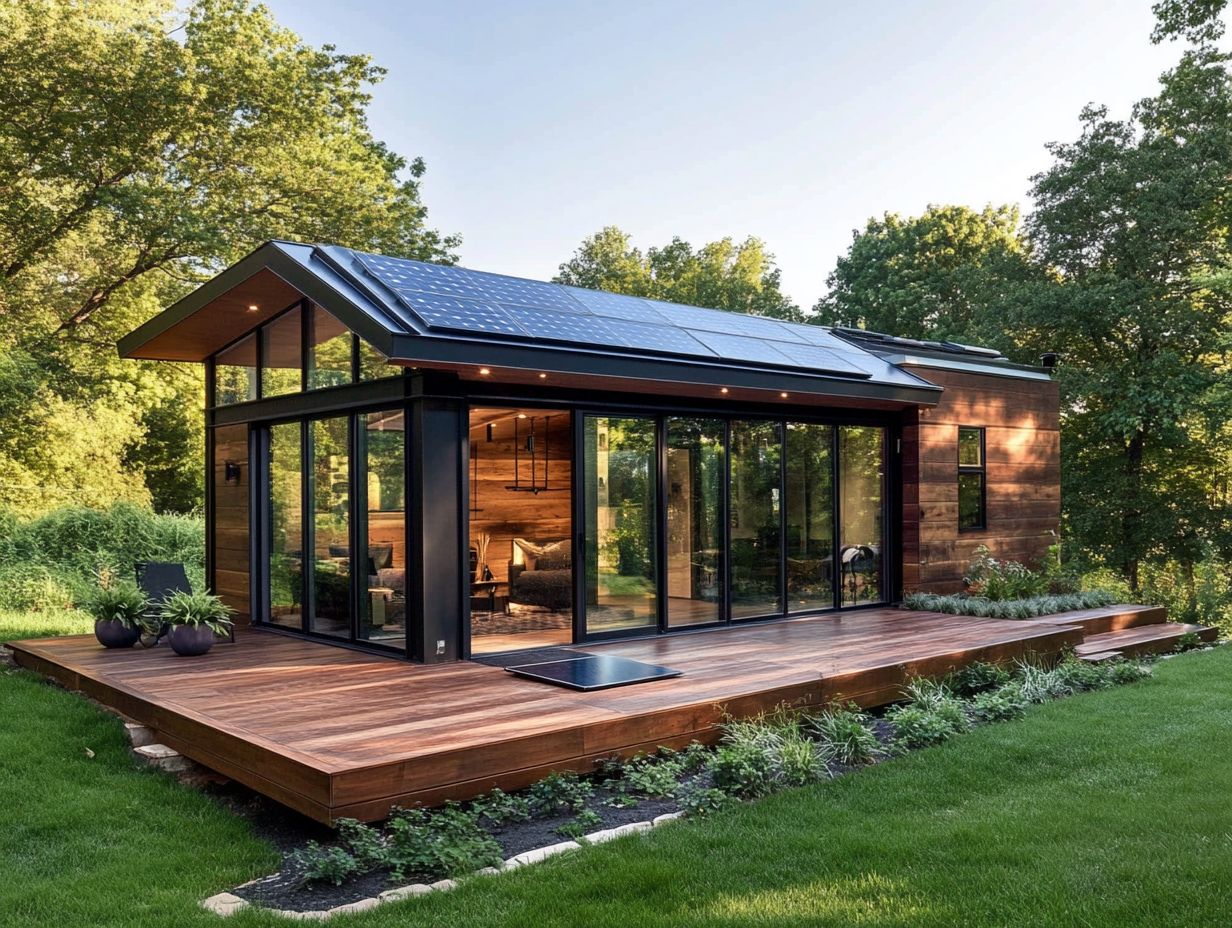
Designing an energy-efficient tiny home is essential for maximizing comfort and sustainability. This involves innovative systems and high-quality materials to create an optimal living environment.
Key elements include integrating energy-efficient solutions like solar panels and smart home technology. Superior insulation is crucial for maintaining ideal indoor temperatures.
Modular construction techniques offer flexibility for customizable designs. Features such as energy management systems and abundant natural light enhance functionality and elevate aesthetics, contributing to a truly efficient tiny living experience.
Key Considerations for Energy Efficiency
When designing an energy-efficient tiny home, focus on several key considerations for optimal performance. One critical element is using insulated panels to minimize heat loss and energy consumption.
Incorporating energy-efficient appliances, particularly those certified by Energy Star which indicates they’re recognized for energy efficiency can significantly lower your utility bills while enhancing comfort.
Don t overlook air sealing techniques like caulking and weather stripping. These are essential for preventing drafts and ensuring a tightly sealed structure.
Explore integrating renewable energy sources like solar panels. This not only enhances your energy efficiency but also promotes independence from traditional power grids.
By focusing on these design elements, you can create a living space that is both efficient and environmentally conscious.
Choosing Sustainable Materials
Choosing sustainable materials is a game-changer for your tiny home! This allows you to create spaces that are visually appealing and environmentally responsible.
By opting for eco-friendly choices, you can significantly reduce your carbon footprint while championing green building practices.
Utilizing sustainable materials fosters a healthy indoor environment, enhances durability, and boosts energy efficiency elements crucial to the essence of tiny home construction.
Eco-Friendly Options for Construction
When considering eco-friendly options for your construction project, you’ll find a variety of materials that can help create a sustainable tiny home.
Take bamboo flooring, for instance. It s stylish and a rapidly renewable resource that can minimize your carbon footprint.
Incorporating recycled steel or reclaimed wood not only reduces material waste but also enhances the unique aesthetic of your home. Choosing low-VOC paints and finishes ensures better indoor air quality.
Insulated panels made from eco-friendly materials help maintain a comfortable climate with minimal energy consumption.
Implementing rainwater harvesting systems and solar panels further showcases your commitment to green building practices. By embracing these materials and sustainable design practices for tiny houses, you contribute to environmental conservation and enjoy a comfortable, stylish lifestyle in your tiny home.
Maximizing Space and Functionality
Maximizing space and functionality in your tiny home is crucial for crafting a comfortable and efficient living environment. This often means embracing space-saving furniture and clever storage solutions.
A well-thought-out compact layout allows you to create dual-purpose areas that adapt to your needs. This ensures that every square inch is put to good use.
This strategic optimization lets you enjoy the perks of minimalism without compromising on comfort or convenience, proving that thriving in a smaller space is entirely possible.
Start designing your dream tiny home today!
Design Tips for Small Living Spaces
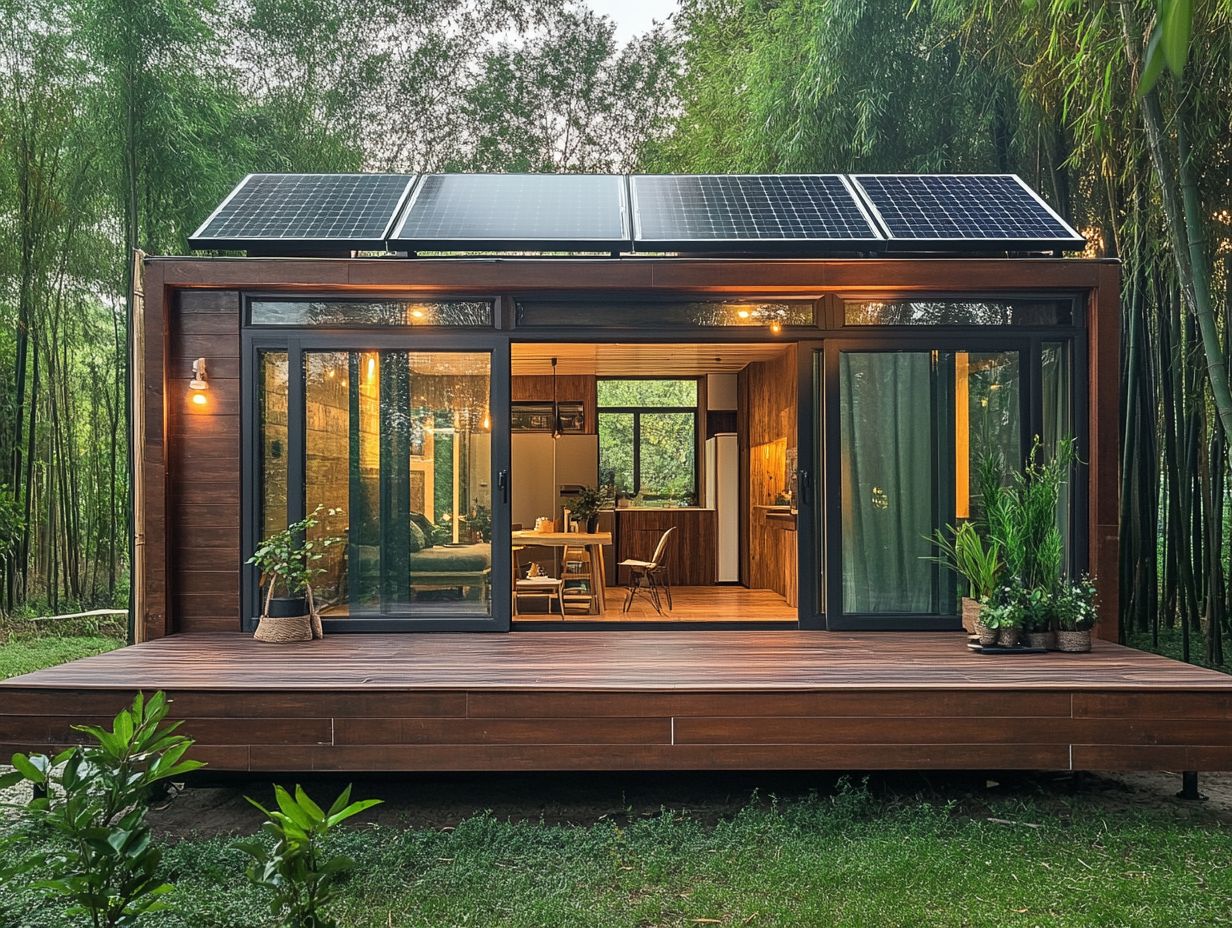
Designing small living spaces requires a keen focus on creating an inviting atmosphere while maximizing functionality. Use space-saving furniture and a smart layout to achieve this.
Consider integrating multifunctional pieces, like a coffee table that doubles as a storage unit. These innovations let you use every inch efficiently.
Embrace natural light. Sheer curtains or mirrors can greatly enhance openness.
If you have outdoor spaces, create a seamless extension of your interior to elevate your ambiance.
Incorporating Renewable Energy Sources
Incorporating renewable energy sources into tiny homes boosts sustainability and gives you control over your energy use, reducing reliance on traditional utilities.
Solar panels are a popular choice. They capture sunlight to generate electricity and can work with battery storage systems for energy efficiency.
Consider rainwater collection systems. They reduce your environmental footprint and provide sustainable water for your home and garden.
Options for Off-Grid Living
Off-grid living in tiny homes offers exciting possibilities for self-sufficiency and sustainability. By using renewable energy systems and innovative waste management solutions, you can align your lifestyle with your values.
Many homeowners are now turning to solar panels to create an efficient energy supply while cutting energy costs. This reduces dependence on conventional utilities.
Explore the benefits of composting toilets. They turn waste into nutrient-rich compost for your garden.
Greywater recycling systems repurpose water from sinks and showers for irrigation, reducing waste and supporting a closed-loop ecosystem.
Maintaining Energy Efficiency in Daily Life
Maintaining energy efficiency is crucial for tiny home residents. Use energy-efficient appliances and low-flow fixtures to lower your energy and water usage.
Prioritize maintenance efficiency. This boosts the performance of your energy systems and ensures optimal indoor air quality for a healthier living environment.
Practical Tips for Sustainable Living
Practical tips for sustainable living in tiny homes can elevate the eco-friendliness of your daily routines. They inspire you to adopt mindful habits that lessen your environmental impact.
By making small yet impactful changes, like adding greywater recycling systems, you can conserve precious resources. This helps reduce your ecological footprint while embracing eco-friendly materials.
Opt for composting toilets. They ease the burden on sewer systems and transform waste into nutrient-rich compost for your garden.
Consider adding solar panels as well. These can harness renewable energy, providing a clean power source that aligns beautifully with your sustainable lifestyle.
By implementing these adjustments, you and the tiny home community can pioneer eco-conscious living. This demonstrates that even confined spaces can nurture a more harmonious relationship with nature.
Frequently Asked Questions
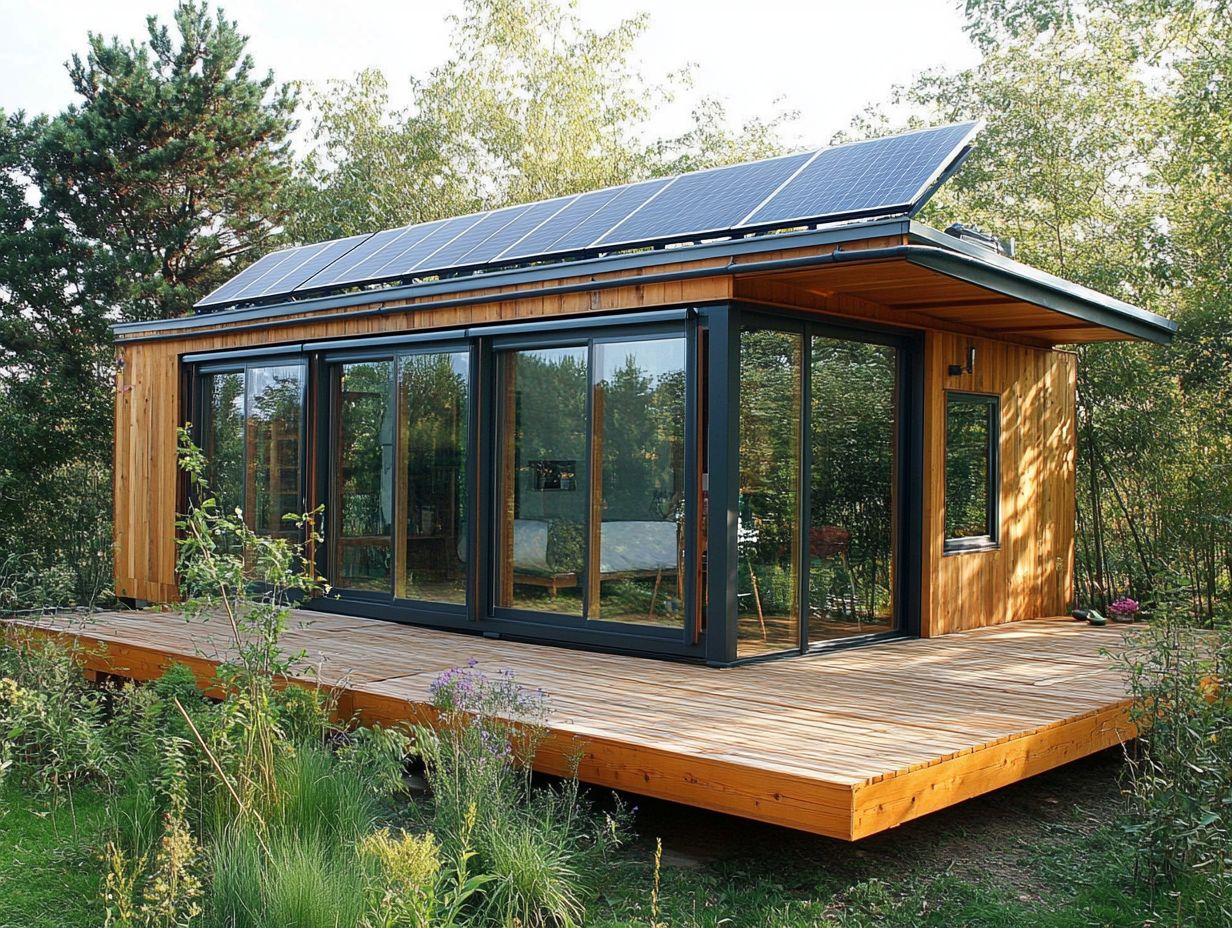
What is the importance of designing an energy-efficient tiny home?
Designing an energy-efficient tiny home is important because it helps reduce energy consumption and lowers utility bills. It fosters sustainability and reduces the negative environmental impact.
What materials should be used in the construction of an energy-efficient tiny home?
Use materials like recycled items, high-quality insulation, and energy-efficient windows and doors.
How can proper insulation contribute to the energy efficiency of a tiny home?
Proper insulation keeps your home comfortable. It prevents heat loss in winter and keeps it cool in summer, saving energy.
What are some design features that can help improve the energy efficiency of a tiny home?
Key design features include strategically placed windows for natural light and ventilation, using passive solar design, and incorporating renewable energy sources like solar panels or wind turbines.
Is it possible to make a tiny home completely self-sufficient in terms of energy?
You can absolutely create a tiny home that is fully self-sufficient in energy! Achieve this through smart design, renewable energy sources, and practices like rainwater harvesting.
How can I ensure that my tiny home is energy-efficient in the long run?
Regular maintenance is crucial for long-term energy efficiency. This includes checking for leaks, replacing old appliances with energy-efficient ones, and monitoring energy usage patterns.



